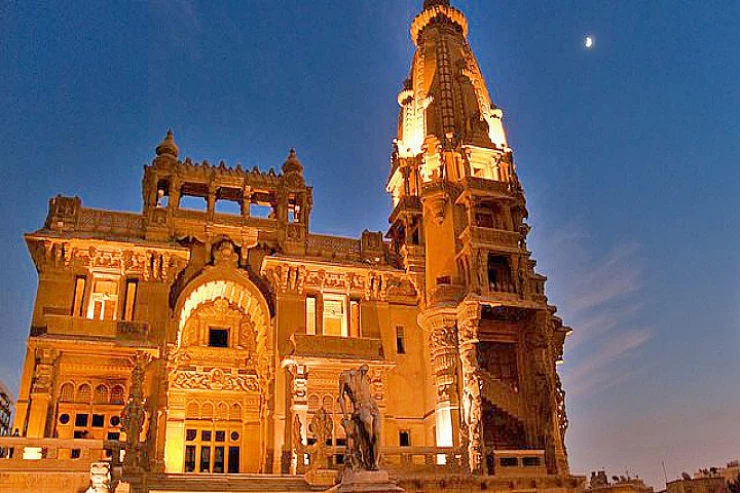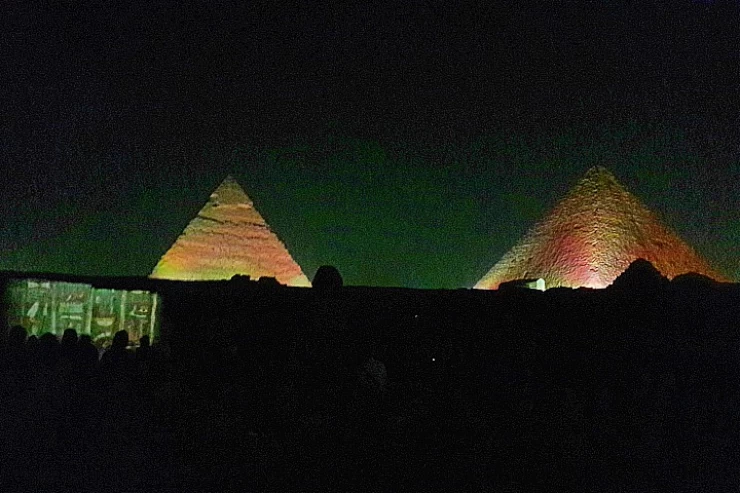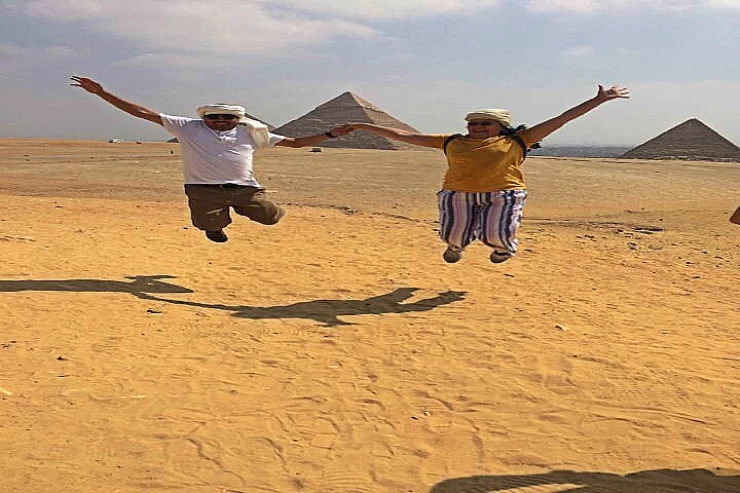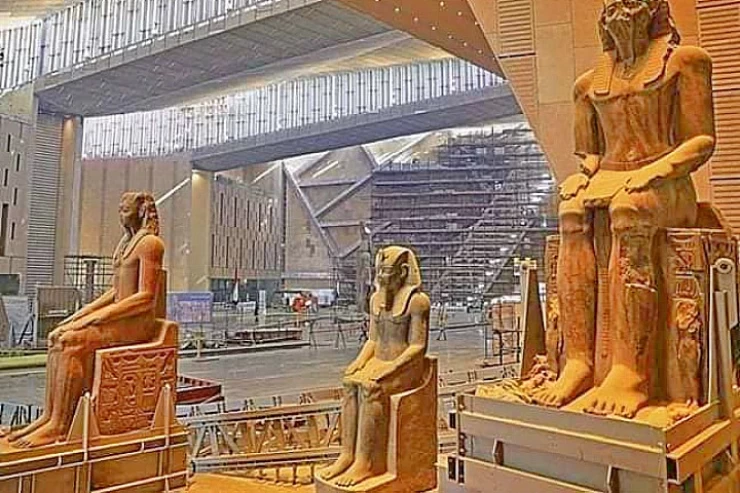
Chephren | History of King Khafre
King Chephren
King Khafre was among the earliest of the Fourth Dynasty pharaohs of Egypt of the Ancient Kingdom of Egypt and ruled during 2570-2544 BC. He was a son of Pharaoh Khufu, and his mother is described as having been Queen Meretites. There are many achievements attributed to his reign, including the construction of the Khufu Pyramid, the second largest of the Giza Pyramids.
The Fourth Dynasty of Egypt with which the king is associated is known as the fourth dynasty that reigned over Egypt from the year 2575 BC to 2465 BC, and there was the Fifth Egyptian Dynasty and the Sixth Egyptian Dynasty, both of which form what is known as the Old Kingdom period, and King Khafre is the fourth ruler of the Fourth Dynasty, and his name, as mentioned above, means "Transfiguration like Ra," and he was married to many wives, among them being Princess Meraas Ankh, and like other pharaohs of Egypt, he had many children.
In general, King Khafre is considered to be among the great pharaohs of Egypt, who, during his reign, established a sequence of religious and economic policies, and the Giza pyramid complex is considered to be among his best works which reflect ancient Egypt's funerary and religious beliefs, which has survived until today one of the best historical and archaeological monuments.
King Khafre's History and Achievements
The Valley Temple of Khafre is a temple built of granite stones next to the pyramid, where a bridge extends between it and the pyramid. Inside it, there are several statues of King Khafre and the god Horus, known as the falcon god," because he takes the shape of a falcon, knowing that these statues are built of diorite stones that they were brought from the Nubian desert, and next to the temple is the Sphinx. It is worth noting that the Valley Temple of the Pyramid of Khafre is the only one of the temples of the Old Kingdom that is still standing and complete to this day, and archaeologists have revealed that there are two roads in front of the entrance to the temple that connects to the marina of the ancient canal located directly in front of the building. Archaeologists have also found basins believed to belong to the purification tent in front of the Valley Temple, where they used to place the king's body to purify him with the waters of the canal.
The Great Sphinx
It is the oldest known monumental sculpture, about 73.5 meters long, including 15 meters the length of its front legs, 19.3 meters wide, and its highest height from the surface of the earth about 20 meters to the top of the head. The Sphinx was built facing the sunrise, where it was completely carved from limestone for a mysterious creature that contains common qualities between the lion and the human, by having the statue with the body of a lion sitting in front of the sun disk and carving its head in the form of a royal human, where the lion symbolizes strength and solidity, while the human head symbolizes wisdom.
Pyramid of Khafre
It is a similar pyramid to the Pyramid of Khufu, but it is smaller by a very small and almost unnoticeable difference, with a height of 142.7 m and a side length of 214 m. The angle of its slope is 53 degrees, and although it is smaller and less high than the Pyramid of Cheops, it appears (from a distance) higher than it, due to the fact that it was built at a higher height than it, noting that it can be accessed through its entrance located on the seaside at an altitude of 11 meters above ground level. From the entrance, you can reach a long vestibule at the end of which is a room with a sarcophagus built of granite, in which it is believed that Pharaoh Khafre was buried, and the upper part of the pyramid is covered by a layer of limestone, while the lower part of the pyramid is covered by a layer of granite.
Statue of King Khafre
This statue was made of diorite stones because of its known permanence, a reference to the eternity of King Khafre's. The shape of the statue depicts the athletic body of a person in the prime of life, regardless of his real age, and the description of the statue—taking a side section of it—states A royal headdress similar to that of the Sphinx, in addition to the presence of an artificial beard, which is a royal appearance for most pharaohs, even females; the same beard is found in the statue of Queen Hatshepsut, and King Khafre sits as depicted in the statue on the throne of Egypt, which is surrounded by powerful lions and other symbols of Egypt, such as papyrus, while the falcon god Horus sits on the throne behind the king's neck, depicting the extent of King Khafre's association with this god.
King Chephren, son of Cheops:
He is the second reigning son of King Cheops, who returned to the Giza Necropolis to build the second biggest pyramid. You can view it fully from various angles during the tour of the Giza Pyramids; this gigantic structure is unfortunately overshadowed by the work of his father.
Even if the Pyramid of Khafra is smaller than the Great Pyramid of Khufu, it appears taller, as it was erected at a higher location. Originally, it had a height of 143.5 m (471 ft), and it still preserves some of its original casing stones on the tip of the pyramid, providing a view of how these pyramids would have appeared to the people of antiquity. This kingdom consists of a well-maintained Valley Temple, where amazing diorite statues of Khafra were found.
King Chephren of the fourth dynasty of the Old Kingdom in ancient Egypt ruled after his elder brother Djedefre, who built his pyramid in Abo Rawash apparently around 2570 B.C. He assumed power for more than twenty years (almost 26 years) and was succeeded by his son, the builder of the last pyramid in Giza, Mycerinus.
During the reign of Chephren, sculpture made significant progress, so although many of his statues have already been recycled in antiquity, we still have several images of this powerful and self-confident ruler. However, it is thanks to the face of the sphinx that Chephren is universally known. The Sphinx, with its lion body and man's head, which was supposed to depict the symbols of royalty and the sun, was carved into the living rock to stand guard along the ramp leading to the pyramid of Khafre; he was known to be a firm ruler. He closed down many of the temples in Egypt, following the trend started by his father, King Cheops.
The pyramid of Chephren was destined to be the last of the great pyramids. His son and heir, Mycerinus, was satisfied with a decidedly less imposing construction; his pyramid is about a tenth of that of his grandfather and is only 66 meters high. Without worrying about how to understand the key terms of Egyptian history, we will see an Egyptologist guide, who will meet your expectations.


















